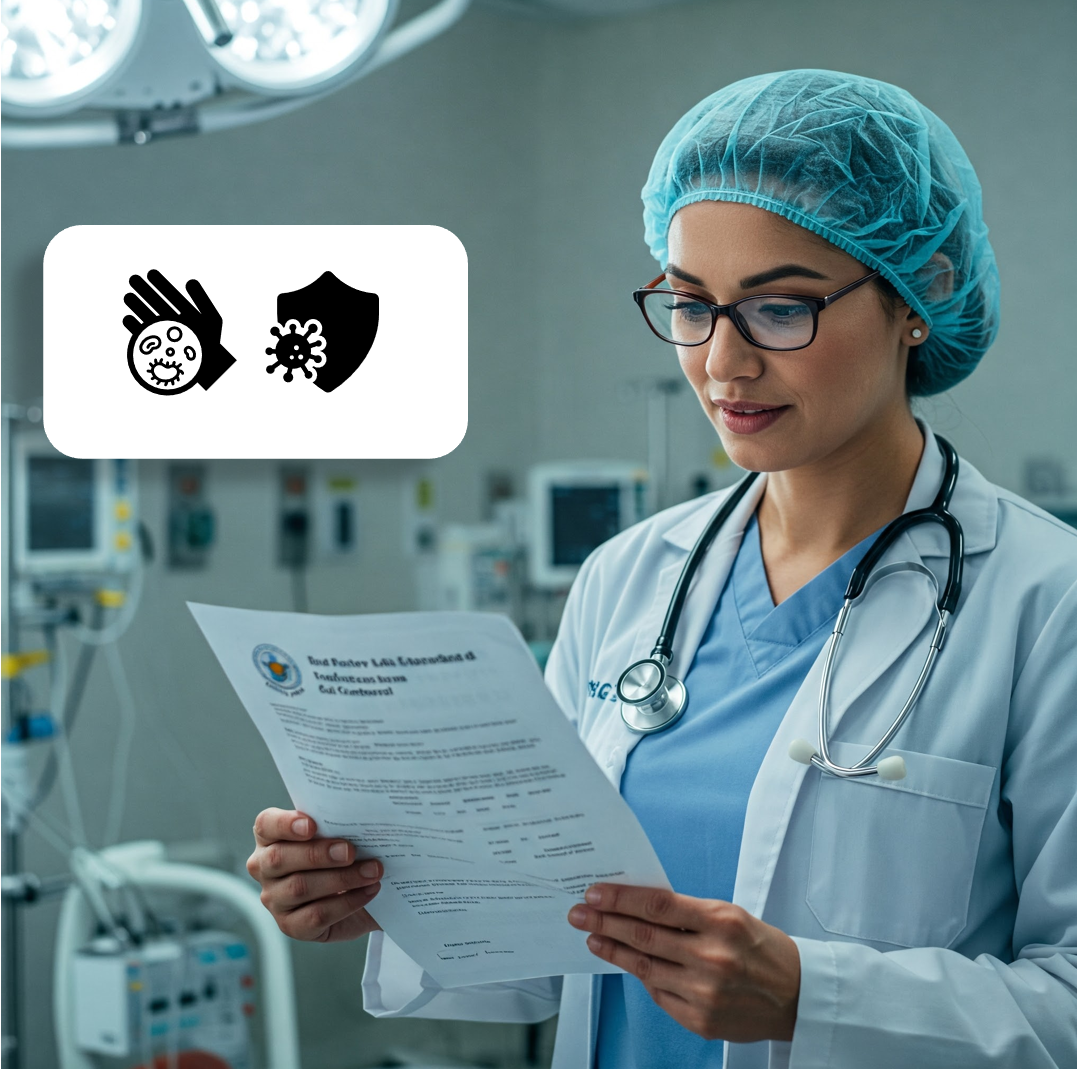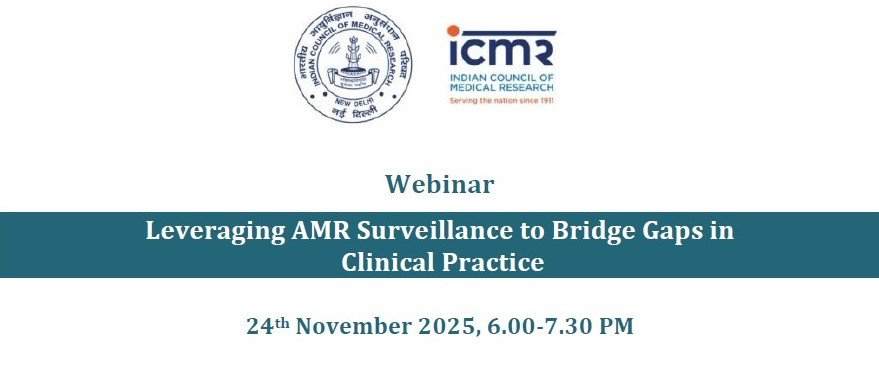Disclaimer: This post is for academic purposes only. Please read the original document if you intend to use them for clinical purposes.
This document synthesizes the themes of IPC Workbook by Association for Professionals in Infection Control and Epidemiology (APIC) & Joint Commission Resources (JCR) focusing on the critical role of Infection Prevention and Control (IPC) programs in healthcare settings globally. It highlights the escalating emphasis on preventing and controlling infectious diseases in the 21st century, exacerbated by globalization and emerging pathogens like COVID-19. Despite significant advances in healthcare, Healthcare-associated infections (HAIs) remain a major concern, incurring substantial economic and human costs. The overarching message is that effective IPC programs are indispensable for patient safety and quality care, requiring comprehensive planning, robust leadership, multidisciplinary collaboration, continuous surveillance, and the rigorous implementation and evaluation of evidence-based strategies.
Global Imperative of IPC
The 21st century marks a heightened focus on IPC because of:
- Increased Exposure & Transmissibility: Millions globally are exposed to infections from healthcare settings and communities annually. Globalization has led to increased transmissibility of diseases as well as to greater awareness of the social and economic effects of infectious disease.
- Persistent Threat of HAIs: Despite advancements in medical devices, clinical practices, and vaccine development, HAIs and emerging infectious diseases (e.g., SARS-CoV-2/COVID-19, SARS, MERS-CoV, Zika, Ebola) necessitate continuous efforts in mitigating and managing reemerging and evolving infectious diseases.
- Significant Costs: HAIs like pneumonia, urinary tract infections (UTIs), bloodstream infections, and surgical site infections (SSIs) lead to extended hospital stays, additional treatments, and even death.
- Shift in Perspective: HAIs were once considered inevitable, but there has been a significant shift in thinking. Many organizations now strive for zero preventable infections, recognizing that a proportion of HAIs are avoidable.
Core Components of an Effective IPC Program
A systematic and proactive IPC program is crucial to reduce infection occurrence and pathogen transmission.
- Comprehensive & Collaborative: An effective IPC program must involve everyone involved in the daily operations of an organization—including top leadership and administration, clinical personnel, environmental services, sterilization and purchasing services, occupational health, and patients and their families.
- Key Components: Essential elements for designing or evaluating an IPC program include:
- Dedicated resources for infection surveillance, prevention, and control
- Adequate number of trained personnel managing the IPC program
- Periodic facility infection risk assessment
- Written infection surveillance, prevention, and control plan based on risk assessment
- Capability to identify and investigate epidemiologically important organisms, outbreaks, and clusters of infectious disease
- Surveillance program that monitors outcomes and practices
- System for obtaining, managing, and reporting critical data and information
- Use of surveillance findings in quality assurance/performance improvement activities
- Internal and external communication systems
- Written policies and procedures based on evidence-based practices
- Compliance with applicable regulations, standards, guidelines, accreditation requirements, and other requirements
- IPC activities integrated with employee health, patient safety, quality assurance/performance improvement, engineering/construction, disinfection/sterile processing, emergency preparedness, and environment of care/facility management and safety programs
- Authority to implement IPC measures
- Education and training of health care personnel
Leadership’s Pivotal Role
Strong leadership is fundamental to the success and sustainability of IPC programs.
- Influence and Commitment: Leadership is defined as the ability to mobilize a group or team to accomplish a specific goal and influence, nothing more nothing less. Engaged leaders cultivate a culture of clinical excellence, focus on overcoming barriers, and inspire their employees.
- Resource Allocation: Leaders must approve and allocate resources required for the IPC program, including sufficient staff (number and mix) and information management systems. Inadequate resources, such as lack of appropriate supplies, such as hand sanitizer, PPE, and cleaning and disinfecting agents, are noted as significant barriers.
- Strategic Prioritization: Hospital leadership prioritize which hospitalwide processes will be measured, which hospitalwide improvement and patient safety activities will be implemented, and how success of these hospitalwide efforts will be measured.
- Data-Driven Decisions: Leaders should set the expectation that data are integral to managing care and should provide the resources to obtain, analyze, and use information to maintain best practices and achieve change when necessary. IPs can create a business case for infection prevention to highlight financial benefits (e.g., avoided costs).
- Emergency Preparedness: The COVID-19 pandemic underscored the need for leaders to invest in IPC programs that not only ensure that the organization has the critical resources to prevent and manage infections on a daily basis but also that it is prepared to respond to the inevitable, but unpredictable, appearance of emerging and reemerging infectious diseases.
Risk Assessment and IPC Planning
A robust, continuous risk assessment process forms the cornerstone of an effective IPC program.
- Dynamic Nature of Risk: Infection risks take many forms and are evolving, requiring periodic and frequent assessment. The risk assessment should be a thoughtful, systematic, proactive examination of infection hazards in the health care environment.
- Comprehensive Scope: Risks are identified based on:
- Its geographic location, community, and population served
- The care, treatment, and services it provides
- The analysis of surveillance activities and other infection control data
- Prioritization: Identified risks must be prioritized to guide the development of IPC goals and the written IPC plan.
- Methodologies: Either quantitative (numeric scoring for probability and severity) or qualitative (e.g., gap analysis, SWOT analysis, FMEA, tracer methodology, ICRA, HVA) approaches can be used.
- IPC Plan Development: The written IPC plan is a clear, well-defined, and useful document that identifies priorities and needs, sets goals and objectives, lists strategies to meet the goals, and includes an evaluation process. It should integrate evidence-based science or expert consensus.
- Examples of IPC Goals: Goals linked to prioritized risks might include reducing specific HAIs , improving compliance , or preparing for emergencies
Surveillance Programs
Surveillance is a critical component for identifying risks, directing prevention, and assessing effectiveness.
- Purpose: Surveillance provides meaningful information that can be used to identify risks for infection so that IPC practices to reduce those risks can be identified and implemented.
- Key Activities: A surveillance program involves collection, analysis, interpretation, and reporting of surveillance data. This includes monitoring outcomes, processes, and epidemiologically important organisms (e.g., MRSA, CRE, C. difficile, Candida auris), and emerging or re-emerging infections.
- Data Utilization: Surveillance findings must be used effectively to improve adherence to IPC practices and reduce and control HAIs. This includes reporting to internal staff, committees, and public health authorities in accordance with law and regulation.
- Outbreak Investigation: IPC programs must have a written process for investigating outbreaks of infectious disease, including actions for suspected or confirmed outbreaks, communication strategies, and coordination with emergency response teams. Timely recognition and reporting of disease are essential to control outbreaks and rapidly spreading epidemics, as demonstrated during the COVID-19 pandemic.
- Inter-facility Communication: When patients with infections requiring monitoring or isolation are transferred, both the transferring and receiving organizations are expected to communicate this information to prevent further transmission.
Implementing Clinical Strategies to Reduce Infection Risk
Effective IPC requires the consistent application of evidence-based clinical strategies such as:
- Standard Precautions: These are IPC measures and activities that protect against possible exposure to infectious agents and are applicable to all patients. Components include hand hygiene, safe injection practices, medication handling, and respiratory/cough etiquette.
- Personal Protective Equipment (PPE): PPE acts as barriers to protect health care workers and to reduce the risk of transmission of pathogens. Proper selection, donning, doffing, and disposal of PPE are crucial, and staff competency in these areas must be ensured through training and demonstration. The COVID-19 pandemic highlighted severe PPE shortages and the need for strategies to optimize PPE and PPE supplies.
- Transmission-Based Precautions: These are to be implemented besides the standard precautions (i.e., contact/droplet/airborne/reverse-barrier isolation) and are meant for specific infectious agents and MDROs (e.g., VRE, MRSA, CRE).
- Antimicrobial Stewardship: Programs aimed at reducing rates of several types of HAIs and the incidence of resistant organisms. They also have a positive cost-benefit for the health-care organization.
- Evidence-Based Practices (EBPs): IPC activities should be based on the best scientific evidence or expert consensus. Resources include guidelines from CDC/HICPAC, APIC, SHEA, and others. The use of practice bundles (e.g., for CLABSI, CAUTI, SSI) is strongly encouraged as they improve patient outcomes when all elements of a bundle are applied consistently to each patient.
- Human Factors Engineering: Understanding challenges like delayed feedback, complexity, time pressure, and inconsistent ergonomic design can help design effective risk-reduction plans.
Maintaining a Safe Environment of Care (EOC)
The physical environment plays a significant role in infection transmission.
- Environmental Surfaces: Pathogens can remain infective on surfaces for prolonged periods. Organizations must ensure that protocols for cleaning and disinfecting environmental surfaces and furnishings and for handling linens and waste are integral components of the IPC program.
- Waste Management: Proper handling and disposal of infectious waste, blood and blood components, body fluids, and body tissues is managed to minimize infection transmission risk. Regulations are typically defined at state or local levels.
- Utility Systems: Water and HVAC systems can be reservoirs and sources for pathogenic agents. Organizations should have water management programs (e.g., for Legionella risk) and address HVAC system failures. IPs should be familiar with the basic components of water systems in their health care facilities and HVAC.
- Construction and Renovation: These activities pose infection risks (e.g., Aspergillus from dust). A Pre-Construction Risk Assessment (PCRA) and an Infection Control Risk Assessment (ICRA) are crucial to identify and mitigate risks, including air quality, utilities, and traffic flow. Effective barriers during construction are essential.
Cleaning, Disinfection, and Sterilization of Medical Devices
Proper reprocessing of medical devices and equipment is paramount to patient safety.
- High Risk: Problems with cleaning, disinfection, and sterilization of medical devices have been recognized by regulatory bodies, leading to intensified survey processes. Failure in these processes can lead to serious infections.
- Spaulding Classification: Devices are classified as critical (require sterilization), semi-critical (require high-level disinfection), or non-critical (require low- or intermediate-level disinfection) based on infection risk.
- Manufacturer’s Instructions for Use (IFUs): Adherence to manufacturer’s instructions is critical. If IFUs are unclear or in conflict, organizations are required to resolve those conflicts by contacting manufacturers or regulatory agencies.
- Standardization and Consistency: Cleaning, disinfection, and sterilization practices should be standardized and implemented consistently throughout the organization, regardless of location.
- Staff Competency: Staff performing reprocessing must be trained on their job duties, and competency assessment then focuses on specific knowledge, technical skills, and abilities required to deliver safe, quality care.
Communication and Education Strategies
Effective communication and ongoing education are vital for IPC program success.
- Multi-Directional Communication: Communication must flow from the top down, from the bottom up, and horizontally across the continuum of care. Lack of communication is a major barrier.
- Staff Education: Orientation is a great opportunity to describe and stress the importance of organizational strategic goals and IPC policies and procedures. Continuous education is needed as practices change or new threats emerge (e.g., COVID-19).
- Patient and Visitor Education: Patients, families, and visitors need to understand expectations and their responsibilities in preventing and controlling infection. This includes promoting hand hygiene, respiratory etiquette, and masking. Tools like info-graphics and the teach-back method are effective.
- Data Reporting: Timely communication to key stakeholders, including physicians and staff, about important IPC information is essential for identifying opportunities for improvement. This includes reporting surveillance data on HAIs and process measures (e.g., hand hygiene compliance).
- External Reporting: Organizations are required to report communicable diseases to public health authorities, in accordance with law and regulation.
Occupational Health Issues
Protecting healthcare workers (HCWs) from infectious disease exposure is a critical aspect of IPC.
- Program Scope: Occupational health programs minimize HCWs’ risk of exposure to infectious disease. They collaborate with IPC programs to ensure immunity to communicable diseases and prompt evaluation of exposures.
- Vaccine-Preventable Diseases (VPDs): Healthcare workers should be vaccinated against common VPDs (e.g., Hepatitis B, influenza). Annual influenza vaccination is acknowledged as a way to preserve both staff and patient safety.
- Emerging Infectious Diseases: Programs must be equipped to screen and assess health care workers for infections caused by emerging infectious disease, such as SARS-CoV-2 (COVID-19), Mpox, Ebola, etc. The COVID-19 pandemic highlighted significant exposure risks for HCWs, necessitating robust policies, PPE, and communication.
- Exposure Management: Organizations must have policies and procedures for post-exposure management, including contact tracing, treatment, prophylaxis, counseling, and vaccination. A non-punitive culture is crucial to encourage reporting.
- Sharps Safety: Programs must address sharps injuries, including the use of devices with engineered sharps safety protection .
Evaluating IPC Program Effectiveness
Continuous evaluation is essential for determining program value and driving improvement.
- Purpose: Evaluation helps determine whether the surveillance, prevention initiatives, and improvement strategies are effectively reducing risk and infections and if this improvement is based on the annual IPC plan.
- Evaluation Cycle: The process involves a continuous cycle of:
- Identifying risks
- Setting goals
- Developing a written plan
- Implementing the plan
- Evaluating plan and program effectiveness
- Annual Review: IPC plans must be evaluated annually and whenever risks significantly change, reviewing successes and failures to inform future risk assessments and program revisions.
- Measurable Achievements: Evaluation should document measurable achievements, such as reductions in HAI rates (e.g., CLABSI, CAUTI). A tiered approach can define minimum expectations and exceptional accomplishments.
- Reporting Findings: Evaluation results should be communicated to primary audiences (leadership, medical staff, IPC committee) using clear, concise, and graphically enhanced reports, with a focus on data interpretation.
- Cost Evaluation: Measuring the cost of infections and the value of the IPC program (e.g., length of stay, treatment costs, legal liability) is an important aspect of evaluation.
- Multidisciplinary Approach: Involving staff from various departments in the evaluation process fosters broad-based solutions and individual and corporate ownership for IPC.
Integrating IPC into Patient Safety and Performance Improvement
IPC is intrinsically linked with overall patient safety and performance improvement initiatives.
- International Patient Safety Goals (IPSG): IPSG.5 directly addresses reducing HAI risk through hand hygiene and preventing specific HAIs.
- Evidence-Based Improvement: Organizations are expected to improve performance based on their stated goals by implementing and monitoring evidence-based practices.
- Targeting HAIs: A key focus is on reducing MDROs, CLABSIs, CAUTIs, and SSIs through evidence-based policies and practices.
- Care Bundles: Infection prevention bundles are sets of evidence-based practices that, when implemented collectively, can improve patient outcomes, promoting teamwork, compliance measurement, and feedback.
- Sentinel Events: An HAI can be classified as a sentinel event, triggering a comprehensive systematic analysis (e.g., root cause analysis) to identify causal factors and implement strong corrective actions leading to sustainable improvement.
- Collaboration: Collaboration among IPC, patient safety, and PI departments has never been more important. By working together, these groups can more effectively and efficiently affect patient care.
Conclusion
This briefing document provides a foundational understanding of the multifaceted nature of IPC programs, emphasizing their critical role in ensuring patient safety and quality healthcare in an increasingly interconnected world.
Citation: The APIC/JCR Infection Prevention and Control Workbook. APIC – Association for Professionals in Infection Control and Epidemiology. JCR – Joint Commission Resources. 2021








